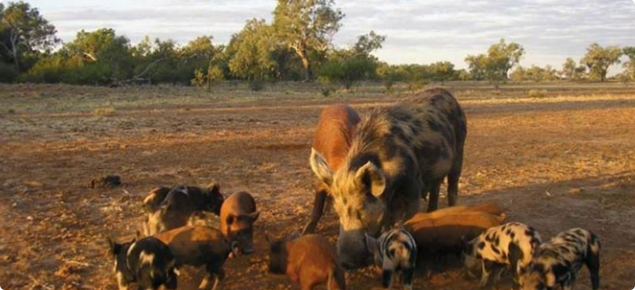Project summary:
This project was the result of combining two projects initially submitted as separate projects. This collaborative venture between Murdoch University and CSIRO focuses on the involvement of a significant number of on-ground partners and end-users.
As such, this project will significantly enhance our capability to effectively manage feral pig impacts throughout southwest WA by developing improved broad-scale operational surveillance methodologies and predictive risk mapping to guide on-ground management strategies. These management tools will also be directly applicable for targeted monitoring of feral pig populations in the event of a disease incursion. The two main approaches were:
- Develop the operational application of aerially deployed infrared sensors to detect and quantify feral pig densities at a regional scale within forest habitats. Aerial detection of free-ranging GPS collared pigs using the infrared sensor provide data on the detection rate of this methodology across varying canopy densities. Outputs include a rapid and cost effective method for assessing free-ranging feral pig abundance on a broad-scale. This work also established preliminary data on the use of this technique for monitoring additional pest species e.g. deer, horses, cattle, dogs.
- Develop risk maps of feral pig distributions and their ecological and economic impacts for southwest WA using an established participatory modelling approach. Modelling outputs were used to optimise surveillance flight paths when using thermal imaging, and with end-users to guide strategic on-ground management. They were also effective planning aids in the case of a disease incursion, highlighting areas of greatest risk and where best to focus available resources to limit the potential spread and maximise control efficacy.
The project was managed by Murdoch University.

